|
Mariana Ríos: It’s my pleasure to welcome Eliza Kinkz to our Las Musas Blog in order to celebrate the book birthday of Goldie’s Guide to Grandchilding, a picture book written by Clint McElroy and illustrated by Eliza. Before jumping into the interview, here’s a little bit about the book in Eliza’s words. Little Goldie is an expert on grandchilding. She knows that grandparents are special creatures who thrive in a structured environment, need plenty of opportunities for imaginative play, love having dance parties, and will never turn down a cuddle. When it comes to the care and feeding of her beloved Grandpa, Goldie knows her stuff. And, as readers will discover, Grandpa knows a thing or two about grandchildren, too. M.R. Congratulations, Eliza! I’m so happy I get to talk to you about this delightful picture book, which I know is your first one. How special! Eliza Kinkz: I’m so happy as well! Having a physical book I helped create coming out seems unfathomable. I’m so excited to just hold it in my hands soon. M.R. I’ve had the chance to read the book and I think it’s such a sweet and funny story, really creative too. I loved it! To get this conversation started, I’d like to know a little bit more about you as an illustrator. Can you share when did you realize you wanted to be one? E.K. In Kindergarten, we did an activity in weekly rotations where we made books. I LOVED IT!!! So I lied that I didn't do it... so I could do it again the next day, and the NEXT. Unfortunately, my teacher caught me on the third lie, and said I couldn't make any more books. Took me only 20 years to realize that I could! After I finished high school, I went on to major in Animation in college as that seemed the best way for me to tell stories. But, after having kids, I rediscovered picture books, and that 5 year old in me burst out. Now I can’t stop making, and creating books. And I hope I never do. M.R. How lovely that you discovered your passion when you were a little girl. I’m glad you realized you could make books as a grown up too, and that you were able to reconnect with your childhood’s dream. What can you share about your career as an illustrator so far? E.K. I was very fortunate in that I was able to take a few years off when I had my two kids. So the transition from animation to illustration came very naturally as I was immersed in the world of young children. What they like, what they don’t like, what makes them happy, what makes them crazy…that became the most meaningful part of my days, and luckily I had a sketchbook as my constant companion to capture all these moments. We moved back to Texas, and I was welcomed by local illustrator Marsha Riti to join the Girllustrators. An amazingly supportive group of Women Children Book Illustrator/Authors, and they provided countless support on my journey to publication. From there, I was encouraged to join my local SCBWI chapter, and took classes at The Writing Barn. Finally, after attending the Austin SCBWI Conference in 2019, I won a Portfolio award, and met an Art Director there who hired me to illustrate my first Picture Book! M.R. I can totally relate to what you said, my children also inspired me to enter the picture book world. What an interesting journey you’ve had! It’s funny how everything comes together, right? Do you currently have an agent? E.K. My journey to get an agent was very slow as I thought agents were 1940s wise guys with bowler hats, and big cigars. So you can imagine my disappointment of not finding one like that. With a heavy heart, I talked to a few illustrator/authors on their agent experiences, and got recommendations on who they like, and who doesn’t share donuts… Anywho, a friend recommended I reach out to my Agent, and we talked the following week. I signed with him, and just photoshopped a bowler hat on his head. Problem solved! M.R. Yes, the path to finding an agent can be slow and hard in some cases. I’m so glad you were able to find the perfect one for you. Now, could you share a little bit about your style as an illustrator and how did you develop it? E.K. I was definitely working on my style since I was 12. I would cut out pictures from magazines of anything I found inspiring, and make these huge collages. Which I still do to this day, but now the collages are made up of my kid’s drawings, illustrators that I find inspiring, and my own work. I would describe my style as pseudo naive with a big dose of manic elephant in tap dancing shoes and a flying mud pie coming directly at your face in 3-2-1! Some illustrators that are currently inspiring me these days are James Marshall, Ludwig Bemelmans, Torr Freeman, Gusti, Jessie Hartland…honestly there are so many amazing current illustrators today, I feel like the list could go on and on. M.R. How fun that you now include your kid’s drawings on your inspiration collages! That’s so sweet and very special. I love that! Thanks for sharing about your life as an illustrator, Eliza. Now let’s move on to Goldie’s Guide to Grandchilding. You’ve mentioned the opportunity to work on this project came up in an SCBWI conference. What did you think when you read the manuscript and when you got the offer to participate on this book? E.K. Like I said, this opportunity came about as I met my Art Director at an SCBWI conference! But I should add the reason my portfolio was awesome is that I signed up for a Portfolio Review with Dan Santat. So of course, I made sure my portfolio looked top notch, and that resulted in the job. Honestly, it was appealing as it was my first offer to illustrate a book with a major publisher. And it was a cute story, which I knew I could help push up a notch to make super-funny. M.R. It’s really a funny story for sure! Illustrating a picture book is definitely a huge part of bringing the story to life. What process did you follow when working on this particular book? E.K. Lots of coffee and thinking and drawing and rolling around in my drawings and then drawing the craziest things I can think of on top of those drawings is my usual process for making a book. Usually I’m working with the art director who is constantly trying to pull me back up for the cliff I jumped off of. There will be lots of back, and forth with the editor until the story and pictures are a good team. It’s a real balancing act making sure the author, and myself are working together as a team on the pages. That’s actually very important to me as an illustrator. I think a lot about where the author is from with these stories. What did the world they grew up in look like, and what are their families like? As I want them to feel like I’m bringing them fully into the stories. I get a lots of direction, and lots of freedom. What I mean by that is we are all working toward the best version of this story happening, but they realize the life of the story truly bursts forth when the illustrator is allowed to show their inspiration from the story on the page. Seriously, such a balancing act… M.R. You’re totally right, it’s a balancing act, which by the way was very successful in this case, as the illustrations are amazing and work perfectly with the text. How did you decide which style of characters to develop for the story and what color palette to use? Did you come up with that on your own or did you get insight from the author or the publisher? E.K. So when I’m working on character design, I usually send a few choices, BUT I always make sure the designs are ones I won’t mind drawing again, and again, and again. BECAUSE if you send a character design you hate, 99% of the time it will get chosen hah. Because, Universe. With the color palette, I usually do a color script for the story as I like to make sure there are no conflicts in the color throughout as I love to work with very vibrant colors. For example, their clothing mismatching in another section of the story. With this story, I was inspired by the color span of a leaf, but I realized brown at the end was serious BLEH. So I changed to purple, and thought how interesting fall would be with some purples mixed in. M.R. This is all very interesting to me, since I only know the process of creating a picture book from the viewpoint of an author, so it’s nice to see what happens on the other side. Thanks for sharing. I wanted to ask about a detail on the book, which is that Goldie only has a Grandpa. The decision to have just one grandparent and for it to be a grandad instead of grandma was the author’s or did you have something to do with it? E.K. It was the author’s decision, and I think if I could go back in time I would have inquired more about that decision. I encourage any illustrator that if you get a chance to talk to your author before you begin the illustration process, to ASK ALL THE QUESTIONS. Don’t be shy as you both have the same goal of making the best book! M.R. Asking all the questions, that’s excellent advice! Regarding the scenes with Goldie and Grandpa through the day, which are are super fun, how did you get inspired for these illustrations? Did you use your own experience in some way? E.K. I’m just very playful, immature, and always on the lookout for silly mischief. So in a way there is a lot of myself in both of these characters. DANCE PARTY! M.R. As a picture writer myself, I know sometimes authors need to include art notes in the text to clarify certain aspects on a scene, however, the illustrator still needs to get freedom to create. What was your experience with art notes for this particular book? E.K. There were some art notes, but unless it truly affects the story, I tend to completely ignore author art notes, AND this is not because I don’t respect the author. It’s just that the first interaction is for me to tell my side of the story. What magic is coming up for me in your writing? What is my vision? How can I add my own voice here with making sure the author’s voice is equally strong? So far my experience has always been that the Author gives some small feedback, but mostly stands back and let’s me create. Which I love, and appreciate. M.R. I can imagine how valuable that freedom is and that most illustrators must feel the same way. How long did it take to illustrate the whole book and how did you deal with the feedback you received from the editor, art director and author? E.K. It was over the course of a year, and a half that Goldie took on my end. But there was many pauses during that time as I would wait for feedback from the editor, author, and art director. Which is normal in publishing, and a part I enjoy as long as I’m not told everything is due tomorrow hah! The reason I like it is you can come back to it with new eyes, and easily see what’s working and what’s not. Usually, I’m very chill with feedback as I always look at this process as a big team effort. There’s so many people working hard at every level to make this book a success! Sometimes it can definitely seem like it’s all YOU as many of us illustrators are working alone, but I keep in mind that everyone is working hard to make this book a success. We all bring important skills to the table with making a book, and I really respect everyone’s role in the process. M.R. I agree! Creating a picture book definitely requires team effort of all the parts involved. Was there something new you learned by working on this project? E.K. Definitely try to figure out your color for the cover as well when you are doing your color script! But luckily milkshakes are always available for any catastrophe. M.R. I’m sure other illustrators will appreciate that advice. Can you share what was your favorite scene to illustrate and why? E.K. The grandparents waiting in line to pick up kids from school. Was a big reflection of the line I used to wait in to pick up my kid at PreKindergarten. So many different ethnicities, and all of us standing together to pick up kids who couldn’t wait to see us! M.R. That sounds really special and warm. I can imagine many memories from all those days coming back to you as you worked on the book. How nice! What is something that you loved the most about this book and what do you hope children will be able to take away? E.K. I loved the slow setup for the final joke at the end. I’m not going to spoil it, but it’s a GIGANTIC payoff. And I want children to realize how important it is to spend time with family…and eat humongous ice cream sundaes! M.R. What a nice message, the importance of family. Eliza, to wrap our conversation up, can you share what comes next for Eliza Kinkz? E.K. I’ve signed on to illustrate two picture books that have not been announced yet, and I’m writing my own books! Also, you can find me weekly at Sunday Haha for my ‘Flamango’ comics, or at my favorite taquería waiting for my breakfast taco. M.R. Eliza it was delightful to have this chance to talk to you. Thanks so much for your time and for sharing about your book and your life as an illustrator. It was very interesting and enlightening. I wish you the best with Goldie’s Guide to Grandchilding and your new projects. I can’t wait to hear more about them. THANK YOU! E.K. THANK YOUUuuuuuuuuuu!!!! Buy Goldie's Guide to Grandchilding today!
1 Comment
Today, we're celebrating Musa Lourdes Heuer's Esme's Birthday Conga Line! Scroll on for a conversation between her and Musa Terry Catasus Jennings. But first, a little bit about her book: Esme lives with her grandparents on the uppermost floor of the topmost best building. It’s her birthday. Mimi and Pipo gave her a beautiful guitar. But they didn’t plan a birthday party. No problem! Esme is great at problem solving. With the help of her cat, El Toro, and a LOT of help from her neighbors in the topmost best building, Esme gets the birthday party of her dreams. Terry Catasús Jennings: Lourdes, Congratulations on your beautiful new chapter book, Esme’s Birthday Conga Line, which came out May 10th! I want to tell you that it was a delight to read. I laughed all the way through. Esme is so much fun! Why don’t you tell us a little bit about your book? Lourdes Heuer: Terry, thanks so much for championing this book as you have. I love that you laughed all the way through. I hope that’s how kids respond, too! Esme’s Birthday Conga Line is a transitional or early chapter book. It has short chapters perfect for read-alouds or for a beginning reader to tackle on their own, with lots of white space and those gorgeous illustrations by Marissa Valdez. It’s perfect for fans of books like Dory Fantasmagory, Princess in Black, or Saadia Faruqi’s Yasmin books. T.J. You know, I got the Yasmin vibe. And you are so right. Esme, like Yasmin, is a perfect introduction to independent reading. I know that here I should start asking you about your journey, but I’m not going to do that. Because the minute you set eyes on Esme, what captivates you is her voice. That wonderful voice. In some ways, the voice reminds me of Ana Siquiera’s work. You both have wonderful characters who are very sure of themselves and have voices that stick with you. Tell us about that voice. L.H. Well, that’s a very generous comparison! I love Ana’s Bella’s Recipe for Success; Bella’s relationship with her abuela is so special, and they make those delicious polvorones! For me, voice is so tied to language, to the choices I make as a writer with language. So, for Esme I think a lot about syntax. For example, she often repeats a word or part of a word within the same sentence or within two to three sentences. Part of that is to support beginning readers. But it also adds to her personality: she demands to be heard, so she’ll say something twice if she needs to! Or she uses the phrase “I think,” at the start of sentences. She’s very determined! T.J. Oh, yeah. She is determined! And, in a way, the way you wrote it made me think of free verse. I loved the refrain kind of things. Happy birthday, says Mimi. Happy birthday says Pipo. Meow says El Toro. L.H. Yes, when I read it aloud, I want it to sound like poetry. I’m not a formalist—I don’t think a lot about meter, for instance. But I can hear when the rhythm is off, even if I can’t always explain why. T.J. Okay. Now you can tell us about your journey to publication. What/who was your inspiration for the story? L.H. Esme started out as a picture book idea that eventually called out for more space. I’m a little obsessed with place, with where stories happen. For Esme, what I knew at the start was that I wanted to tell an apartment building story, an elevator story, and that I had an image in my mind of a conga line wrapping up around a staircase. It took off from there. T.J. You know, in a work in progress I have a conga line through Abuela’s apartment building. It is such a fun image. Now tell me, what is Esme’s backstory? I sense that Esme moved in with Mimi and Pipo because something happened to her parents, but you don’t talk about that in the book. Tell me more about that. Did you at any point have that in the book? What made you put it in/take it out? L.H. I don’t talk about it in the book, and that was a conscious decision. I thought about young readers who would see themselves in a similar situation, not living with their parents, and I thought about this phrase that, if I’m remembering correctly, I heard for the first time in the Slate podcast Mom and Dad Are Fighting, which is “mining for pain.” I didn’t want those readers to feel compelled to explain why they too didn’t live with their parents. There was a period of time in my own life when I was 12 that I did not live with my parents, though I went to live with my older sister, not my grandparents. I think it’s safe to assume that, most times, if a child is not living with a parent, there’s some trauma there. But I don’t think kids owe us their pain narratives. T.J. I totally get that. Let’s talk about the humor in your book. I heard Jerry Spinelli once answer a question on how he made things funny. He said something like he puts characters in a situation that’s bound to be funny. And that’s exactly what you did. We don’t know how old Esme is, we know this is her first birthday since she moved in with Mimi and Pipo, but a youngster trying to pull off a full-fledged birthday party with cake, pinata, and music and to which she invites all her friends in the building by herself? You know that is bound to be funny. And you bring it!! You do it. What Esme does to get herself a birthday party is hilarious. L.H. I love that framework! I think humor needs exaggeration and escalation. Her physical situation, life in an apartment building, builds that escalation in. The more she works her way floor by floor, the wilder things are going to get. By the time she reaches Manny in the basement, she’s wrapped everyone else above around her finger—and she’s left a mess in the elevator for Manny to deal with! T.J. Oh, has she ever wrapped everyone around her pinky! She has no shame, she is not afraid to demand that people help her. I had an aunt like that, maybe two. Bossy. But in the sweetest sort of way. And people do whatever she wants. I can see Esme growing up to be like my aunt Conchita for sure. She is a force of nature. What was your model for that? Are you Esme? Maybe she’s your sister. Where did you find her? Are you able to get anyone to do anything for you? Where did the other characters come from? L.H. No, I’m afraid I don’t have Esme’s charms! Honestly Terry? I’m more like Dominguita (from your wonderful series Definitely Dominguita), always with my nose in a book. But without a doubt there are some elements in the story that come from my childhood. Until I was 8, I lived in the “uppermost floor” of what was, to me, but not in actuality, “the topmost best building.” In fact, my father still lives there. And there were three sisters that lived in an apartment on the ground floor. And we had an old, infamous elevator that often was out of service because someone would forget to properly close a door—and a super, Manolo, who was adamant none of us kids should ride the elevator without supervision, and, like Dominguita, we lived on the sixth floor! Of course, we thought of Manolo as our nemesis!! T.J. Yay! I’m so glad you know Dominguita! I see the fact that she and Pancho live in an apartment building as a part of their personalities. And now I see you had a model for Manny, the superintendent. I love him. He dislikes drippy ceilings, dirty hallways, and stinky things. He dislikes children and most of all children in elevators. But she drags him along with her and in the end, you see his smile. That was probably the sweetest victory of all… L.H. I have to thank my editor, Samantha Swenson, for that. I think my first go was maybe not necessarily mean but not exactly generous to Manny, either, and of course, her suggestion to take it easier on him made the ending so much better, so much sweeter! T.J. Thank goodness for those editors that help us bring out the sweet. I have been the recipient of that and you are right, it makes all the difference in the world. One of the things that I love about this book is the community. I actually have the same thing in Dominguita. I wonder if this is a Cuban thing. How important community is to us. The adults help the kids in these off the wall endeavors without blinking an eye. It’s like it’s the way it’s supposed to be. L.H. Terry, I have no doubt it’s a Cuban thing, a Latinx thing! It’s this idea of no te preocupes—we’re going to make this work, even if we’re making do with little. When Dominguita needs a lance, her dad comes through with a closet pole. You need armor? El Señor Fuentes from the salvage yard is going to hook you up. It’s the same thing for Esme. Oh, we need to put together a party? Don’t worry. We’ve got you. T.J. I could not get over Marissa Valdez’s illustrations. Did she capture the way you thought that Esme should look? It is so cute. I have to tell you that next to Esme, Manny the Superintendent of the building is my favorite. Tell me more about the illustrations—that last illustration sums up the book. How was it working with Marissa? L.H. I wish I had a photo of Manolo from when I was a kid. I know he didn’t have a mustache, but when I saw the sketches for Manny, I just about fell over. I was 8 again, walking into the building lobby and seeing him mop the floor. Marissa is a rock star. I love how she’s blended our Cuban and Mexican backgrounds. I don’t know how to adequately explain how her illustrations bowled me over. I have so many favorite ones—Esme’s floor by floor list of who she’s going to invite, the signs around the elevator Esme shamelessly ignores, the first peek we get into the Mora apartment, Baby Leon, and El Toro. Did you spot him washing the dishes wearing a pair of gloves?? All the best parts of this book come from Marissa. T.J. El Toro is in every spread, doing something hilarious. Helping. I love him! What do you hope readers take away from Esme’s story? L.H. Of course, the importance of community that we just spoke of. How people step in and up when you need them most. The sense of making do with few things but a lot of love. JOY! Laughter!! T.J. Tell us what else is in the horizon for you. L.H. There are more chapter books featuring communities in my horizon, though I can’t share much more about that for now, and I’m wrapping up edits on a series of board books Zara González Hoang and I are making together, as well as a middle grade translation project. My debut picture book, On this Airplane, with illustrations by Pura Belpré Honoree Sara Palacios, also published by Tundra Books, comes out later this year in October. And guess what? The second Esme! book will be out this time next year, and I can’t wait for it! T.J. I will put that on my TBR list! Can’t wait either. Congratulations, Lourdes. I can’t wait to hear and read. And Zara! You guys will rock it together. This has been so much fun. I look forward to working with you again. Purchase Esme's Birthday Conga Line today!
Mariana Ríos: It’s my pleasure to welcome Jenny Lacika to our Las Musas Blog to celebrate the book birthday of “Again, Essie?”, a picture book written by Jenny, illustrated by Teresa Martínez and published by Charlesbridge. In this picture book, Rafael wants to protect his toys from his little sister, Essie. Gathering materials from around the house, he builds a wall tall enough and wide enough to keep her out. But will it be strong enough? And what does Essie really want? A playful exploration of physical space and geometry, featuring Chicanx characters and a glossary of Spanish words. Part of the Storytelling Math series that celebrates children using math in their daily adventures as they play, build, and discover the world around them. Joyful stories and hands-on activities make it easy for kids and their grown-ups to explore everyday math together. Developed in collaboration with math experts at STEM education nonprofit TERC, under a grant from the Heising-Simons Foundation. M.R. Jenny, congratulations on the release of your book! How exciting! I’m so happy to have the chance to interview you. How do you feel about it finally getting to the shelves? Jenny Lacika: Thank you so much Mariana! I am so excited about this book finally being available to readers. I think Teresa Martínez did such an incredible job creating images, and a cover in particular, that draw people in and make them want to read. I feel incredibly lucky that she brought such joy and energy to my words and I can’t wait to share it with kids. I am also excited to read your debut, SANTIAGO’S DINOSAURIOS, releasing in October, because it addresses some of the same themes of perseverance, creativity, and social relationships! I think it’s so important to use stories together so kids can see themes from different perspectives and in different contexts to show they are relatable more broadly. M.R. Thanks so much! I love what you say about using stories together so kids see the same themes from different perspectives. Jenny, can you tell us a bit about you as an author? When did you realize you wanted to write for children? J.L. I really came to writing accidentally. I was always hesitant to share my creative ideas as a child and even as a young adult, because I was unsure of how they would be received. Like many of us, I didn’t grow up reading a lot of stories that I saw my whole self in, so writing stories like that didn’t immediately occur to me. When I started having cognitive challenges associated with multiple sclerosis, I took up writing as a brain exercise. I started in 2014, taking classes and attending critique groups, but I didn’t seriously consider pursuing publication until the call for submissions for the Storytelling Math series in 2018. I loved that they were asking for stories that combined elements that were very important to me, culture and math. Prior to that, I was trying to write stories that didn’t feel 100% authentic to me. The call for submissions opened up a floodgate of ideas, and I started writing about things that really mattered to me. Much of my work now explores STEM education, disability, and Chicanx culture and history. M.R. What an inspiring journey, Jenny. I can totally understand what you mean about the importance of writing stories that feel authentic, I’m glad you finally got that chance. How has your writing career been so far? J.L. I feel like I was really early in my writing journey when this book was acquired by Charlesbridge. I was just starting to figure out what I had to say. The process of publishing this book really helped to shape how I see my writing and why I keep doing it. AGAIN, ESSIE? was not the first story I submitted to the Storytelling Math series though. I sent two stories in when I saw the initial call, but neither were right for the series. A second call for submissions went out in 2019. Luckily I had lots of new ideas and I was able to work with the editors on a couple of them. After I received an offer on AGAIN, ESSIE?, I started querying agents in earnest, eventually finding a match in Miranda Paul at Erin Murphy Literary Agency. Together we have found homes for six more picture books, including one that grew from one of those original Storytelling Math submissions. I feel like I am learning so much all the time and am grateful to every writer who has taken the time to help me along the way. It’s not an easy business but having support like the Las Musas community and authors who seek to lift others up, like Meg Medina, makes it a lot easier. M.R. Wow! Six more picture books coming soon, that’s incredible! Congratulations! I agree with what you say about the value of the support in the writing community and, specifically Las Musas. It definitely makes the journey less lonely and more rewarding. Jenny, can you share how did you get the idea for Again, Essie? J.L. In this book, I wanted to capture the kind of sibling relationship my brothers and I had, and my kids have with each other. There’s a constant push and pull of wanting to be together and wanting to be left alone. I’m a middle child, so I have been on both sides of the sibling equation, sometimes at the same time. One reason I love this series and wanted to be a part of it is that it showcases math in the everyday. The children’s museum here has a giant sign of an Albert Einstein quote, “El juego es la forma más elevada de investigación.” It was important to have the math be fun. I also wanted to explore math in an organic way, free of any special materials. My youngest was very interested in building with blocks at the time, so I wanted to incorporate that. I very intentionally had Rafael find objects from around the house to build with, so it could be accessible to almost anyone. I wanted to highlight the rasquache attitude of resourcefulness and adaptability that many kids understand naturally. I was lucky that at the time I was drafting this story, my kids were close to the age of the target audience, so I got to present them with some materials and see what kinds of challenges Rafael might encounter, and what kind of creative thinking he might use. The oversized materials really engaged them in the mathematical thinking, and they extended their play by finding new materials around the house.
M.R. I agree that our own kids can be such a great source of inspiration four our writing, that’s been my case too. How did you come up with your characters’ names and personalities? J.L. Essie is actually short for Esperanza because she uses her joy and enthusiasm to literally break through the barriers keeping her from exploring with her brother. It is my hope that kids see themselves as capable of breaking through those barriers that others construct, in math and beyond. As a Latina interested in STEM, I was fortunate that my dad worked as an engineer when I was young. In my house, it was never a question of if I was capable. Unfortunately, that wasn’t always the case at school, even with educators. I had to push past others’ expectations. So Essie embodies that determination. Rafael is Essie’s foil, serious and so focused on his goal that he misses the bigger picture. One of the express goals of this series is to give readers an inclusive vision of mathematical thinkers, and I think that really works in two ways. One, as a way for readers to see themselves as mathematical thinkers, and two, as a way for readers to see others as mathematical thinkers. So Essie and Rafael are kind of the two sides of my own experience. M.R. Thank you for sharing that! I love how your characters are two sides of your own experience. How special! Can you explain what was the process for writing your book? J.L. The process of writing this book was a slightly different process than most of my books. I had submitted other stories to the series that ultimately weren’t the right fit, but I had the opportunity to get to know the editors and felt comfortable bouncing some new ideas off of them when the second call for submissions went out. They actually encouraged writers to submit early to receive feedback. I sent them several stories and they let me know that the mathematical concepts in this story were intriguing and gave me some notes. We worked on several revisions before they made an offer, and then more edits after the contract was signed. I feel really fortunate that this book was such a collaborative effort and I am grateful they were willing to put in so much time with me because I learned so much about writing and the business in general. There were two editors working on this story: Alyssa Mito Pusey, an editor from Charlesbridge, who helped me create an engaging, satisfying story; and Marlene Kliman, an editor from TERC, to make sure the math aspects are helpful and clear in the context of the story. Most of the initial work was on creating a story framework to carry the math. Story definitely came first. I first submitted the story in April 2019, so the whole process took about three years. M.R. Jenny, that’s so interesting! You must have learned a lot from working with two editors. Publishing a book is truly a collaborative team effort in many ways. I’d like to ask you now about the usage of some Spanish words in your book. J.L. The decision to add Spanish was one I actually struggled with a little. Even though I grew up with tons of environmental exposure, I didn’t speak Spanish at home. The reason I thought it was important to include at least a little is the same reason my own Spanish is limited. When my Grandmother started school, she experienced abuse from educators before she learned English. She didn’t want my mother to experience the same discrimination she endured as a child, so she spoke English at home. The power structures that have existed have told us that Spanish is incongruous with academia. I felt it was important to show these kids using logic and math and also Spanish. They are not mutually exclusive. I wanted my characters to have both. M.R. I definitely think the addition of Spanish gives another layer to your book. How did you come up with the title? J.L. Again, Essie? is a phrase that repeats several times in the text, and eventually shifts meaning, so it seemed a natural fit for the title. I also thought back to when my kids were toddlers and we would read the same book over and over, “again,” and I thought it was funny to plant that seed in the title. I hope my readers will ask for Essie again and again. M.R. Repetition in picture books can be a powerful element and I think it works perfectly in your story. Regarding the illustrations, were you involved in the process in any way? Do you have a favorite one? J.L. I think this story was unusual because the math relies heavily on the illustrations. While I don’t think I included any art notes, I did include reference photos of each of the configurations of objects that I was envisioning. I didn’t have any communication with Teresa, but she took the text and really transformed it beautifully, adding so much emotion and movement to my words and creating visual side narratives, like with the pet cat and the family. The text is fairly simple, so having that emotion and humor in the images is so essential for engaging readers. I love every image with Essie and Rafael together because they really show the relationship between these two kids, but I think my favorite illustration is the final one in the book. Every expression Essie has is full of joy, but in the end Rafael finally shares in that joy. But I also love the little details that follow through, like the cat! |
Las Musas SpeakWelcome to our blog! Archives
July 2024
Categories
All
|

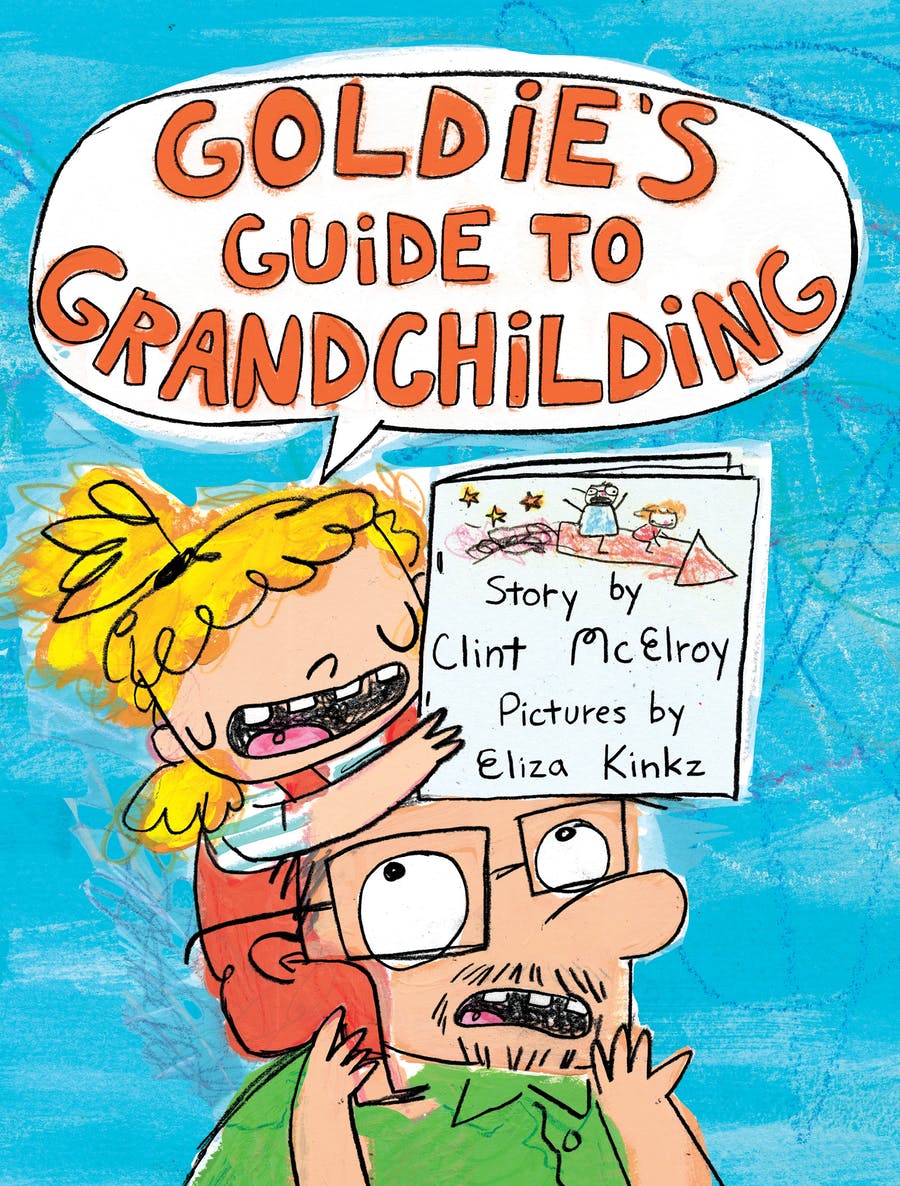

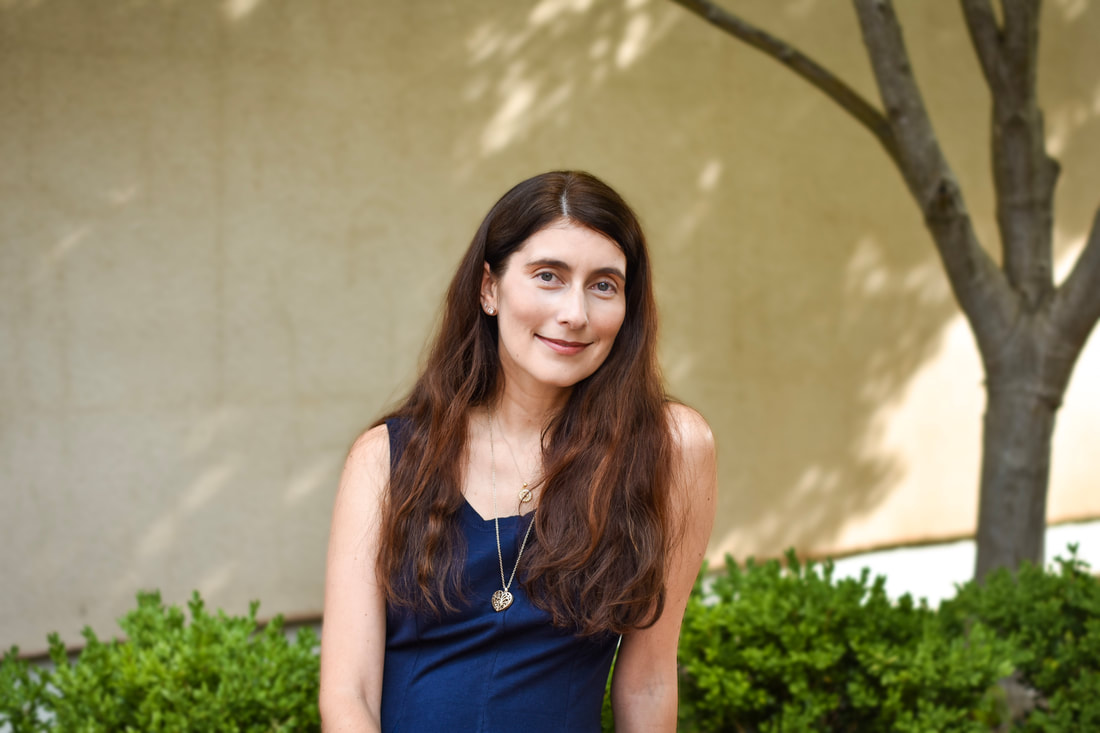
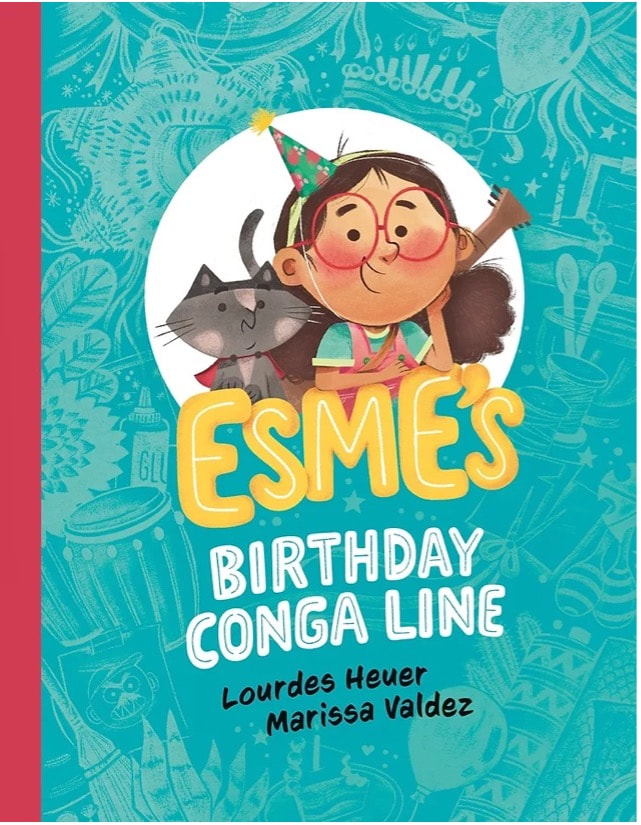

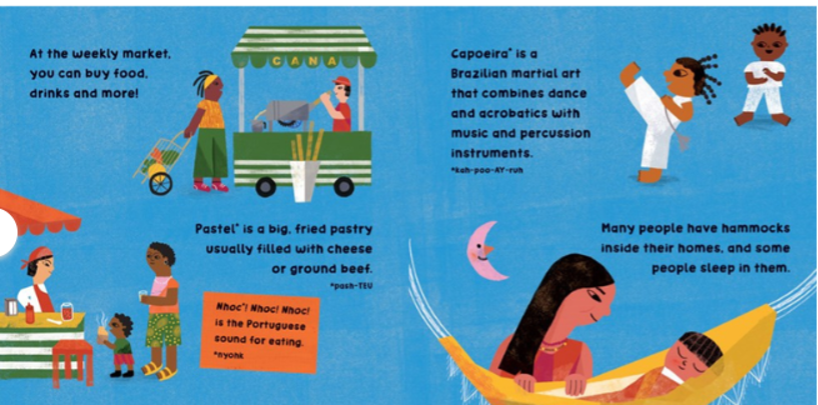
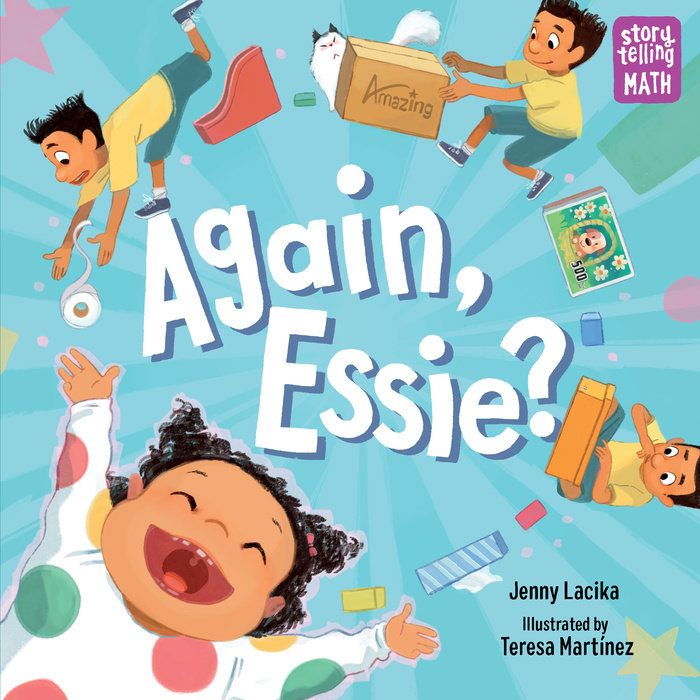
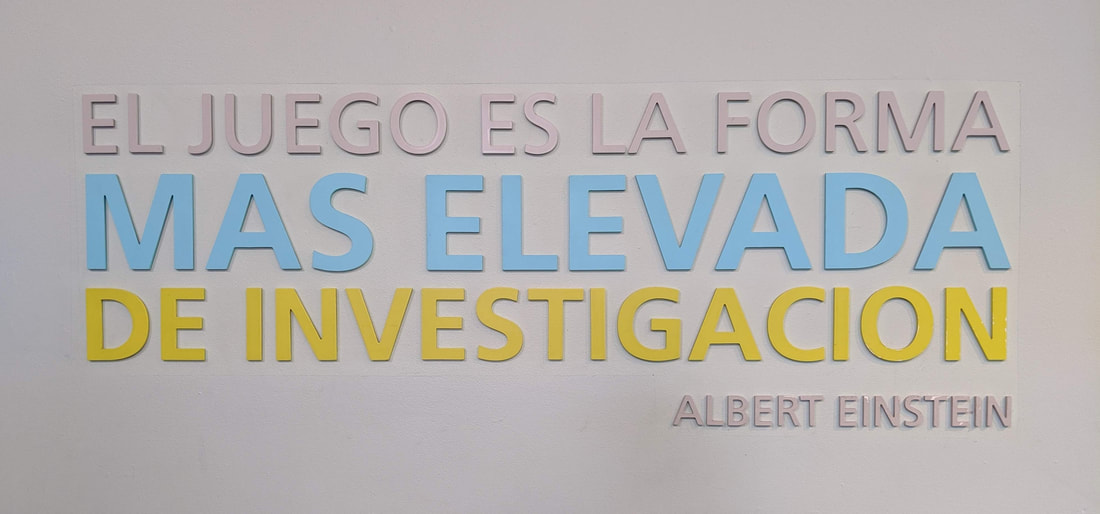
 RSS Feed
RSS Feed